MORE IMPORTANT INFORMATION ABOUT YOUR TRAVEL TO Frankfurt Airport
Frankfurt (officially: Frankfurt am Main (German: [ˈfʁaŋkfʊʁt ʔam ˈmaɪn]; Hessian: Frangford am Maa; lit. "Frank ford on the Main")) is a metropolis and the largest city of the German federal state of Hesse, and its 746,878 (2017) inhabitants make it the fifth-largest city in Germany. On the River Main (a tributary of the Rhine), it forms a continuous conurbation with the neighbouring city of Offenbach am Main, and its urban area has a population of 2.3 million. The city is at the centre of the larger Rhi
Source:
WikipediaADDITIONAL INFORMATION ABOUT Dresden
Dresden (, German: [ˈdʁeːsdn̩]; Upper and Lower Sorbian: Drježdźany; Czech: Drážďany; Polish: Drezno) is the capital city of the German state of Saxony and its second most populous city, following only Leipzig. It is the 12th most populous city of Germany, the fourth largest by area (following only Berlin, Hamburg and Cologne), and the third most populous city in the area of former East Germany, following only (East) Berlin and Leipzig. Dresden is contiguous with Freital, Pirna, Radebeul, Meissen and Cos
Source:
WikipediaImages of the trains for your trip

Where Can You Travel With Us?
TAKE A LOOK AT OUR MAP
France
Italy
Netherlands
Luxembourg
Austria
Germany
Belgium
Switzerland
Denmark
Sweden
Norway
Hungary
Czech
Ukraine
China
Active
France, Italy, Netherlands, Luxembourg, Austria, Germany, Belgium, Switzerland, Denmark, Sweden, Norway, Hungary, Czech, Ukraine, China
Upcoming
USA, Canada, Spain, Poland, Japan

Other Train Trips From Dresden:

Dresden to Ebermannstadt

Dresden to Kestert

Dresden to Pressig Rothenkirchen

Dresden to Weida Altstadt

Dresden to Hofheim Taunus

Dresden to Helmbrechts

Dresden to Essen

Dresden to Bunde Westfalen DE

Dresden to Magdeburg

Dresden to Sinsheim Elsenz

Dresden to Weilheim Oberbayern

Dresden to Wippra

Dresden to Stadtoldendorf

Dresden to Unna

Dresden to Rot Am See

Dresden to Wiesbaden Igstadt

Dresden to Burg Stargard Mecklenburg

Dresden to Bad Nauheim

Dresden to Eutin

Dresden to Trier South

Dresden to Ibbenburen

Dresden to Schafstadt

Dresden to Munich Airport

Dresden to Bad Homburg

Dresden to Erlangen Bruck

Dresden to Uberlingen

Dresden to Mannheim Friedrichsfeld South

Dresden to Borssum

Dresden to Leinefelde

Dresden to Duckterath
WHY YOU SHOULD TRAVEL BY TRAIN?
To travel from Dresden To Frankfurt Airport, trains would be the best travel choice, for several reasons:
1
Eco-Friendly
Trains are the most environmentally-friendly way of transport to the EU Environment Agency. They are powered by electricity, which is renewable and has a low environmental impact.
2
Speed
Travelling by train is in most cases the fastest way to go from Rome to Milan. Trains usually travel at high speeds, making them the fastest way to get from one place to another.
3
Safety
Travelling by train is one of the safest forms of transport. Trains are heavily regulated and monitored, making them safer than other forms of transport.
4
Price
Travelling by train is often cheaper than other forms of transport, such as flying or taking a bus. Trains are often subsidized by the government, making them cheaper than other forms of transport.
5
Luggage
Travelling by train is a great way to transport luggage. Trains usually have plenty of space for luggage and they are usually safe and secure.
6
Time
Travelling by train is often faster than other forms of transport, such as driving or taking a bus. Trains usually travel at high speeds, making them the fastest way to get from one place to another.
7
Comfortability
Travelling by train is usually very comfortable. Trains usually have comfortable seating and plenty of legroom, making them a great way to travel.
8
Sleep
Travelling by train is a great way to get some sleep. Trains usually have comfortable seats and plenty of legroom, making them a great way to get some rest while travelling.
9
WIFI
This is not necessarily the most important when you travel since we prefer to tell you to enjoy your travel without your phones, but on trains, you can find WIFI onboard, so you remain connected to the internet if you choose to.
Popular Routes

Geneva Airport To Champery

Paris To London St Pancras International

Paris To Brussels Midi South

Bologna To Verona Porta Nuova

Ragusa To Naples

Amsterdam To Brussels Zaventem Airport

Nice Ville To Lyon Part Dieu

Amsterdam To Brussels

Liege Guillemins To Eupen

Zurich Airport To Lauterbrunnen

Rotterdam To Antwerp Berchem

Paris Charles De Gaulle CDG Airport To Nantes

Milan To Rome

Stuttgart To Basel

Frankfurt To Paris

Amsterdam To Boom

Bellinzona To Basel

Vienna To Budapest Keleti Palyaudvar

Bietigheim Bissingen To Nuremberg

Paris To Rome

Biarritz To Bordeaux Saint Jean

London St Pancras International To Amsterdam

Naples To Milan

Zurich To Basel

Frankfurt To Amsterdam
THESE ARE THE TRAIN OPERATORS WE WORK WITH




















